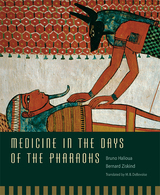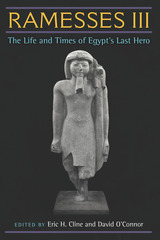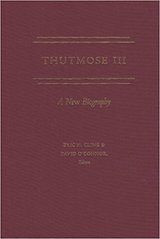
At the temple of Kom Ombo near Aswan, an enigmatic frieze depicts the deified pharaoh Imhotep receiving a set of elaborate implements, some of which strikingly resemble modern surgical instruments: side by side with eye-of-Horus amulets one finds what surely must be forceps. Evidence of the medical practice of ancient Egypt has come down to us not only in pictorial art but also in papyrus scrolls, in funerary inscriptions, and in the mummified bodies of ancient Egyptians themselves.
Bruno Halioua and Bernard Ziskind provide a comprehensive account of pharaonic medicine that is illuminated by what modern science has discovered about the lives (and deaths) of people from all walks of life--farmers, fishermen, miners, soldiers, scribes and priests, embalmers, construction workers, bakers, prostitutes. From mummies and medical papyri we are able to recognize the aches of osteoarthritis, imagine the occupational hazards faced by press-ganged stonemasons, and learn of the gynecological complaints of courtesans. In presenting these stories Halioua and Ziskind throw light on some of the most enduring questions about life and death in antiquity: about physicians whose skills predate Hippocrates by twenty-five centuries and were first made famous by Homer; about the remedies and techniques they employed, at once strange and strangely familiar; about the men, women, and children they treated; and about the diseases and injuries they were called upon to heal.

This collection offers the best new scholarship on Ramesses III, with contributions from Christopher J. Eyre; Ogden Goelet, Jr.; Peter W. Haider; Carolyn R. Higginbotham; Kenneth A. Kitchen; Bojana Mojsov; Steven R. Snape; Emily Teeter; and James M. Weinstein, as well as from David O'Connor and Eric H. Cline. It will be of interest to those with an informed amateur's interest in Egyptology as well as to scholars of Egyptian and biblical archaeology.

Thutmose III was without question one of Egypt's greatest pharaohs. His 54-year reign was packed with momentous events as well as being unusually long. Thutmose III includes an overview of his life, and detailed examinations of civil administration, the religion and cults, the monumental architecture and royal building program, royal tombs and iconography, royal portraiture and ideology, the artistic production, the Northern and Southern campaigns, as well as the Aegean and other foreign visitors to Egypt during Thutmose's time. Finally, the book concludes with a look at the end of his reign and the accession of Amenhotep II.
This extensive treatment of a pivotal figure in the ancient Mediterranean world during the Late Bronze Age will provide a uniquely comprehensive view of one of Egypt's greatest pharaohs and will be of interest to a wide audience, including specialists in Egypt and the Near East, graduate and undergraduate students, and those with a general interest in Egypt.
Eric H. Cline is Associate Professor of Ancient History and Archaeology in the Department of Classical and Semitic Languages and Literatures at George Washington University.
David O'Connor is Lila Acheson Wallace Professor of Ancient Egyptian Art and Archaeology at the New York University Institute of Fine Arts.
READERS
Browse our collection.
PUBLISHERS
See BiblioVault's publisher services.
STUDENT SERVICES
Files for college accessibility offices.
UChicago Accessibility Resources
home | accessibility | search | about | contact us
BiblioVault ® 2001 - 2024
The University of Chicago Press









